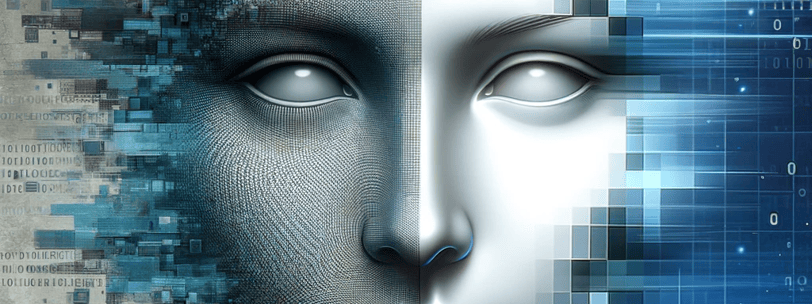Cyber Threat Intelligence in the Era of Deepfakes and Disinformation
THREAT INTELLIGENCE AND ANALYTICS


Introduction
In today's digital age, the spread of deepfakes and disinformation poses serious challenges to cybersecurity. As technology advances, cybercriminals are finding new and sophisticated ways to deceive and manipulate individuals, organizations, and even governments. In this blog post, we will explore the importance of cyber threat intelligence and how it plays a crucial role in combating the threats posed by deepfakes and disinformation.
Step 1: Understanding Deepfakes
Deepfakes are manipulated audio, images, or videos that use artificial intelligence (AI) to create realistic but false content. These deceptive creations can be used to spread disinformation, defame individuals, or even manipulate public opinion. To illustrate this step, an image could depict a side-by-side comparison of a genuine photo and a deepfake image, highlighting the differences and the potential dangers.
Step 2: Recognizing Disinformation
Disinformation refers to intentionally false or misleading information that is spread with the purpose of deceiving or influencing others. It can be challenging to distinguish between genuine and false information, especially when it is presented in a convincing manner. To illustrate this step, an image could show a person reading a news article with exaggerated and sensationalized headlines, emphasizing the need for critical thinking and fact-checking.
Step 3: The Role of Cyber Threat Intelligence
Cyber Threat Intelligence (CTI) involves collecting, analyzing, and interpreting information about potential cyber threats. It provides valuable insights into the tactics, techniques, and procedures employed by cybercriminals. CTI helps organizations identify and mitigate risks, detect and respond to attacks, and make informed decisions to protect their assets. An image for this step could depict a cybersecurity analyst analyzing data and connecting the dots to uncover potential threats.
Step 4: Gathering and Analyzing Data
Gathering and analyzing data is a crucial aspect of CTI. It involves monitoring various sources such as social media, forums, and dark web platforms to identify potential threats and trends. Advanced analytics tools are used to process and make sense of the vast amount of data collected. An image could show a network of interconnected data sources being monitored and analyzed by a team of cybersecurity professionals.
Step 5: Sharing Threat Intelligence
Sharing threat intelligence is essential for collective defense against deepfakes and disinformation. Collaboration among organizations, governments, and cybersecurity experts helps in the timely detection and response to emerging threats. An image for this step could depict a group of professionals from different organizations sharing information and working together to combat cyber threats.
Conclusion
In the era of deepfakes and disinformation, cyber threat intelligence plays a vital role in safeguarding individuals and organizations from cyber threats. By understanding the nature of deepfakes, recognizing disinformation, and leveraging the power of CTI, we can collectively combat the challenges posed by these malicious activities. It is crucial to stay informed, remain vigilant, and work together to protect ourselves and our digital ecosystem.


